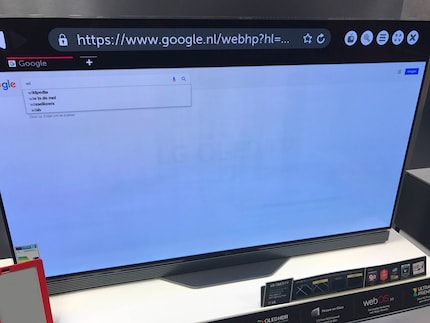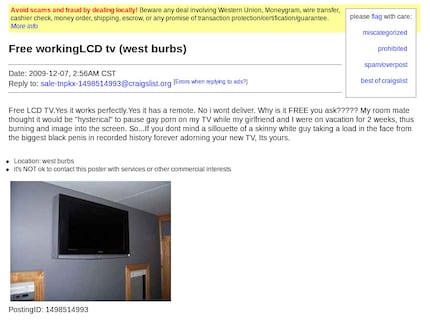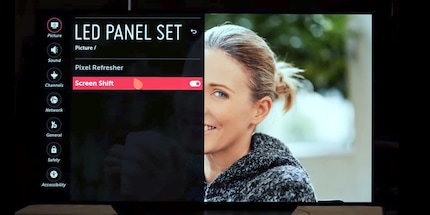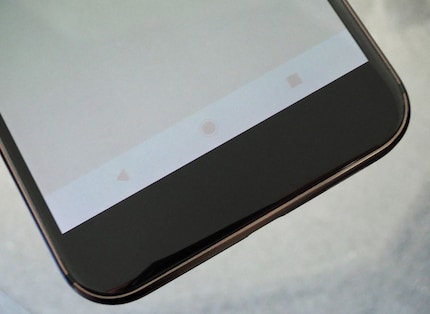
OLED and burn-in: what's really going on with burnt-out pixels
OLED TVs give you the best picture you can get for the money. But opponents are certain: if you buy an OLED TV, you'll get burn-in, and that's bad. Time to investigate.
Burn-ins. They are real, they exist. Talking around it is useless, dear OLED manufacturers. However, the right conditions must be in place for burn-in to occur and, dear OLED opponents, these are generally not present in the average consumer.
In this article, I would like to dispel some of the myth of burn-in and put some real facts on the table. What does burn-in actually mean? How does it develop? And how do you avoid burn-in with your OLED glass or phone?
Let me shed some light on the subject.
The difference between burn-in and image retention
Burn-in is when you see ghostly residue on the screen from something that was still playing even though you've already changed the channel. For example, if you're watching the latest season of Luke Cage and you can still see the shadowy, dark outline of the Prosieben logo and it won't go away, then you've got burn-in. And that's bad, of course.
However, if the outlines disappear again after a few seconds or minutes, this is image retention. Unlike burn-in, image retention is only a temporary effect and occurs much more frequently than burn-in. Burn-in, on the other hand, is a very permanent evil that is best prevented by not allowing it to occur in the first place.

How does OLED burn-in occur?
The term "burn-in" is actually not entirely accurate. This is because heat in the sense of "burning in", as the English term implies, has nothing to do with the ghostly schemes of past logos or news tickers.
The term was coined in the days of CRT monitors, where light-emitting phosphor, which generates the image, loses its luminosity over time. OLEDs, on the other hand, have organic light-emitting diodes. Their advantage is that they light up without backlighting. However, their service life is limited to around 20,000 hours, according to current knowledge. So if you watch five hours of television a day, you can easily enjoy OLEDs for ten years.
But the brighter and longer OLED screens shine, the faster they lose their luminosity. Burn-in is therefore nothing more than OLED pixels that can no longer shine as brightly as the pixels around them. Unbalanced ageing, so to speak. Or as Dr Eldon Tyrell from "Blade Runner" would say:
"The light that burns twice as bright only burns half as long."
Imagine that every pixel is a candle. The candles that are constantly lit burn down much faster than the unlit candles. Once burnt down, there's no going back, the candle is gone - that's a burn-in.
Sounds obvious, doesn't it?
Burn-in occurs when individual OLED pixels are subjected to particularly high stress compared to the other pixels. Particularly heavy means that a static image element such as the channel logo or the health bar is displayed for days and several hours at a time when playing games. Anything else is usually not enough to cause burn-in.
How do you prevent burn-in on your OLED TV?
The "trick" is to allow the OLED pixels to age evenly. You can do this by watching TV as normal. Yep, that's actually all there is to it. Almost sounds a bit too easy now, doesn't it?
The truth is that in normal use, the TV picture changes so constantly that, on average, all eight million pixels of your UHD TV are used evenly. Burn-in therefore only occurs in very specific extreme cases, which you can easily avoid if you know what to look out for.

Pausing the game while playing and then letting it run in freeze mode for several hours because you want to make a quick purchase is taboo from now on. Make sure you watch different content so that you have as few static image elements as possible: sports, films, series, games... always alternate a little. But you're probably already doing this if you haven't bought your TV just for gaming or watching the news.
If you notice ghostly shadows on your OLED for the first time, then you probably only have image retention. This is not too bad and will disappear after a while. Try to avoid the static elements that have caused image retention for the next few hours. If the image retention appears more and more regularly, it becomes critical and you should act quickly.
- Turn down the brightness of your TV
- Choose a picture setting that is slightly dimmer, for example "Cinema"
- Make sure that "Screen Shift" (for LG) or "Pixel Shift" (for Sony) is activated in the settings
- Enable the screen saver - even for video games
Explanation: You only need to reduce the brightness where you have detected image retention or burn-in. Screen shift and pixel shift are technologies that constantly move (shift) the image back and forth so that all pixels are used evenly. Most OLEDs are set at the factory so that the screen saver is activated as soon as the TV registers a static image that has not been changed for a longer period of time. Nevertheless, make sure that the screen saver is activated.

OOLED televisions usually also have a manual pixel refresh programme. You can find it in the picture settings under "Panel Refresh" (Sony) or "Pixel Refresher" (LG). Since last year, LG's Pixel Refresher has even been used automatically every four hours of use as soon as you go into standby mode. Therefore, disconnect your LG OLED from the power supply as rarely as possible.
How do you prevent burn-in on your OLED mobile phone?
OLED displays are also available for smartphones. Samsung, the largest manufacturer in this field, calls its displays AMOLED. LG's smartphone OLEDs are called POLED. AMOLED and POLED both have in common that they can be just as affected by burn-in as their TV counterparts. Navigation bars and notification panels in particular are typical burn-in causes.

Source: themrphone.com
Here are my tips on how to avoid smartphone burn-in. As with televisions, the aim here is to reduce the number of static image elements:
- Activate the automatic brightness adjustment
- Shorten the time set for your mobile display to remain activated when not in use
- Hide the navigation bar when you don't need it
- Choose a background image with dark colours and change it regularly
- Use keyboards with dark themes
The risk of burn-in is greater with brightly lit displays than with less bright displays. The adaptive brightness helps to avoid running the display at full steam for an unnecessarily long time. The less the navigation bar is switched on, the fewer static screen elements you have. Fortunately, you can hide the navigation bar on most smartphones ("immersive mode"). Dark background images and keyboard keyboards with dark colours help to reduce the display brightness. Try "SwiftKey" for iOS or Android.
Conclusion Burn-In: Everything is only half as bad
Burn-in is not cool, agreed. It messes up your picture and there's nothing you can do to get rid of it. Obviously, that's a good way for OLED opponents to try and sway undecided buyers. The fact is: if you don't want to worry about burn-in at all, then an OLED TV or smartphone is not for you.
Omitting OLED for this reason would be a decision that would deprive you of the best picture technology currently available. Apart from that, you can avoid burn-in by watching TV normally and making sure that static picture elements don't burn out the organic light-emitting diodes too often for hours on end.
In short: burn-in is possible, but unlikely.
I write about technology as if it were cinema, and about films as if they were real life. Between bits and blockbusters, I’m after stories that move people, not just generate clicks. And yes – sometimes I listen to film scores louder than I probably should.
Interesting facts about products, behind-the-scenes looks at manufacturers and deep-dives on interesting people.
Show all